The scent of pineapple, 'pieces of unprofitable land' and wild cherries
Barley ripening in the summer heatwave
Too hot to walk far this morning. Barely a breath of wind to stir the ripening barley. The arable landscape here is rapidly turning to gold.
Footpath through arable fields, with a verge of wild grasses and arable weed wild flowers
There’s a whiff of pineapple scent in the air, rising from under my feet and it’s coming from rayless mayweed, more aptly named pineapple weed, Matricaria discoidea. No one is quite certain where it originally came from or how it arrived in Britain but it probably came from the North-West United States, and it may have reached there from North-East Asia, where it also grows. Since it was first found North Wales in 1871 it has spread to every part of the UK.
Pineapple weed thrives in soil conditions that few other plants will tolerate and is often found in farm gateways - and almost anywhere where soil is compacted by passing feet or the weight of vehicles. Sir Edward Salisbury, the late Director of the Royal Botanic garden at Kew and author of the the New Naturalist classic Weeds and Aliens (1961) attributed pineapple weed's success to two factors - aside from its tolerance of soil conditions that deter competitors. One was its prolific seed output. Salisbury was a meticulous measurer of weeds' reproductive potential and calculated that, on average, the plants produce about 7000 seeds, 93% of which germinated. He found one exceptional plant that produced an estimated 70,000 seeds. The second factor was the automobile. Pineapple weed didn't really begin to spread far and wide until widespread ownership of cars with treaded tyres carried the seeds in mud over long distances. It’s a botanical hitch-hiker.
The parched ground beside the footpath was shimmering in the heat haze today but this delightful common centaury Centaurium erythraea was flowering amongst the parched grasses. I’ve walked this footpath, beside the old Brancepeth colliery site, on scores of occasions but have never seen it here before. I’ve always had a soft spot for this charming little plant, ever since I first began to learn how to identify wild flowers. In those days field guides with coloured illustrations for identifying plants were expensive. If you couldn’t afford them the next-best route to a botanical education required drinking a lot of tea, wheeling and dealing, and patience.
In the late 1950s and 1960s Brooke Bond marketed tea with sets of picture cards in the packets. The first complete sets I managed to collect, with the help of aunts, uncles and grandparents who were urged to drink tea like there was no tomorrow, and cousins and school friends who swapped duplicates, were the British Wild Flowers series illustrated by Charles Tunnicliffe. Here is centaury, stuck into my tea card album about 60 years ago; the Latin name for the plant has been revised since then.
Stifling, hot days like today make people lethargic but have the opposite effect on insects like this skipper butterfly. There were dozens of them, whizzing around between bramble flowers. The small skipper is something of a success story here - it only started to breed in County Durham in the 1980s but since then has become common and extended its range further northwards, probably in response to climate change.
Scentless mayweed Tripleurospermum inodorum in the corner of a barley field that had been missed by the plough and herbicide sprays. Poet Molly Holden loved these edgelands and untilled corners, that she called ‘pieces of unprofitable land’, full of arable weeds and insect life.
Common mallow Malva sylvestris. A species of waysides and waste ground. Like several of the mallow family, the plant is full of mucilage, which was extracted from the roots to make a soothing ointment.
Knapweed Centaurea nigra coming into flower. The purple elements of our flora - knapweeds, thistles and willowherbs - come to the fore in mid-summer.
Seven-spot ladybird in a spear thistle flower bud. A new generation, from eggs laid in spring by overwintered ladybirds, is hatching now.
Wild cherries Prunus avium ripening. It looks like a bird has already had a peck at one of them. Once they begin to ripen the birds take them very quickly. Rooks often eat those that fall under the tree. The hard cherry stones are also popular with field mice. When I demolished our old garden shed I found a mouse's stash of scores of cherry stones from the tree that used to grow in our garden hedge, each with a neat hole nibbled in it.




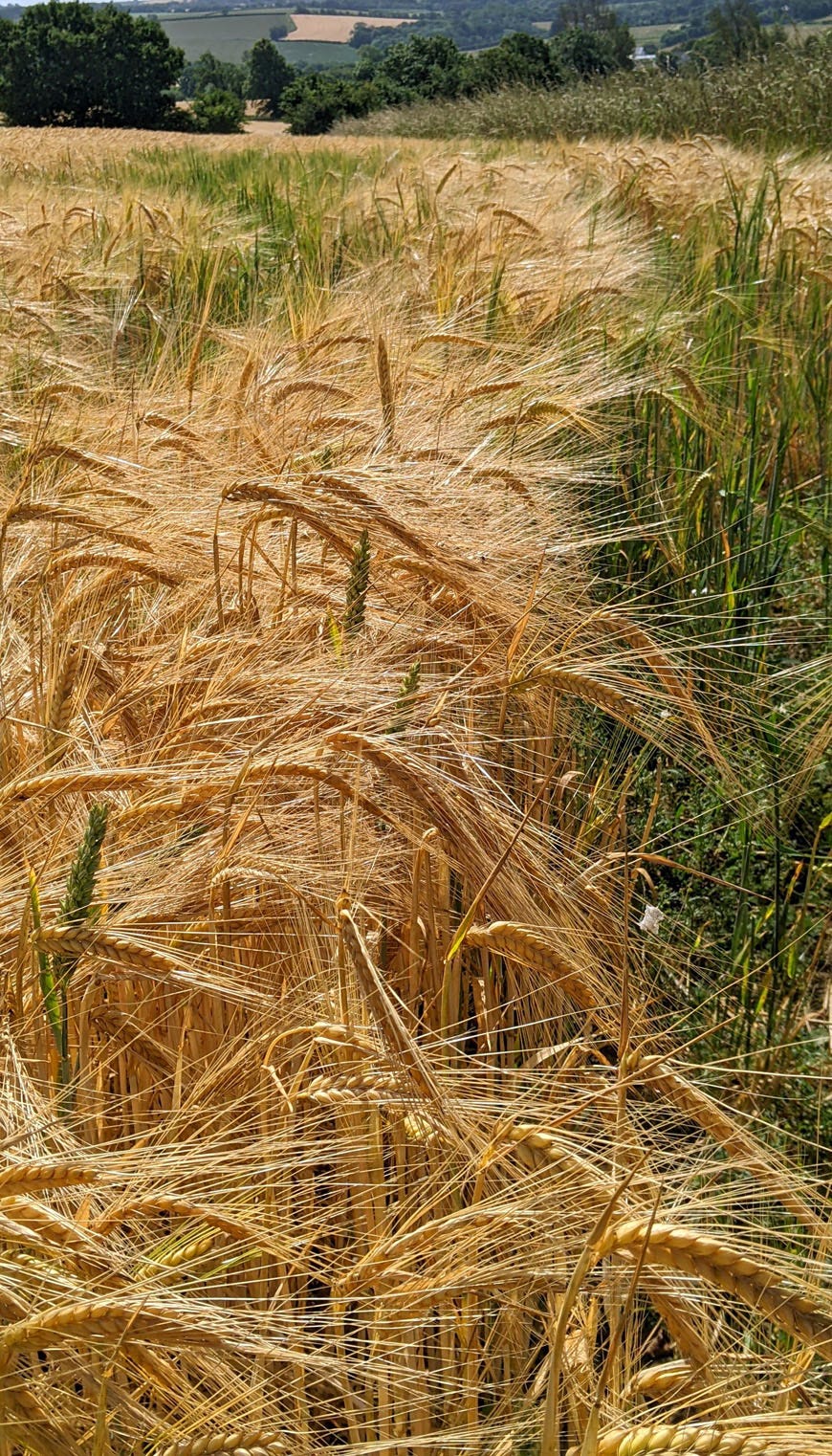
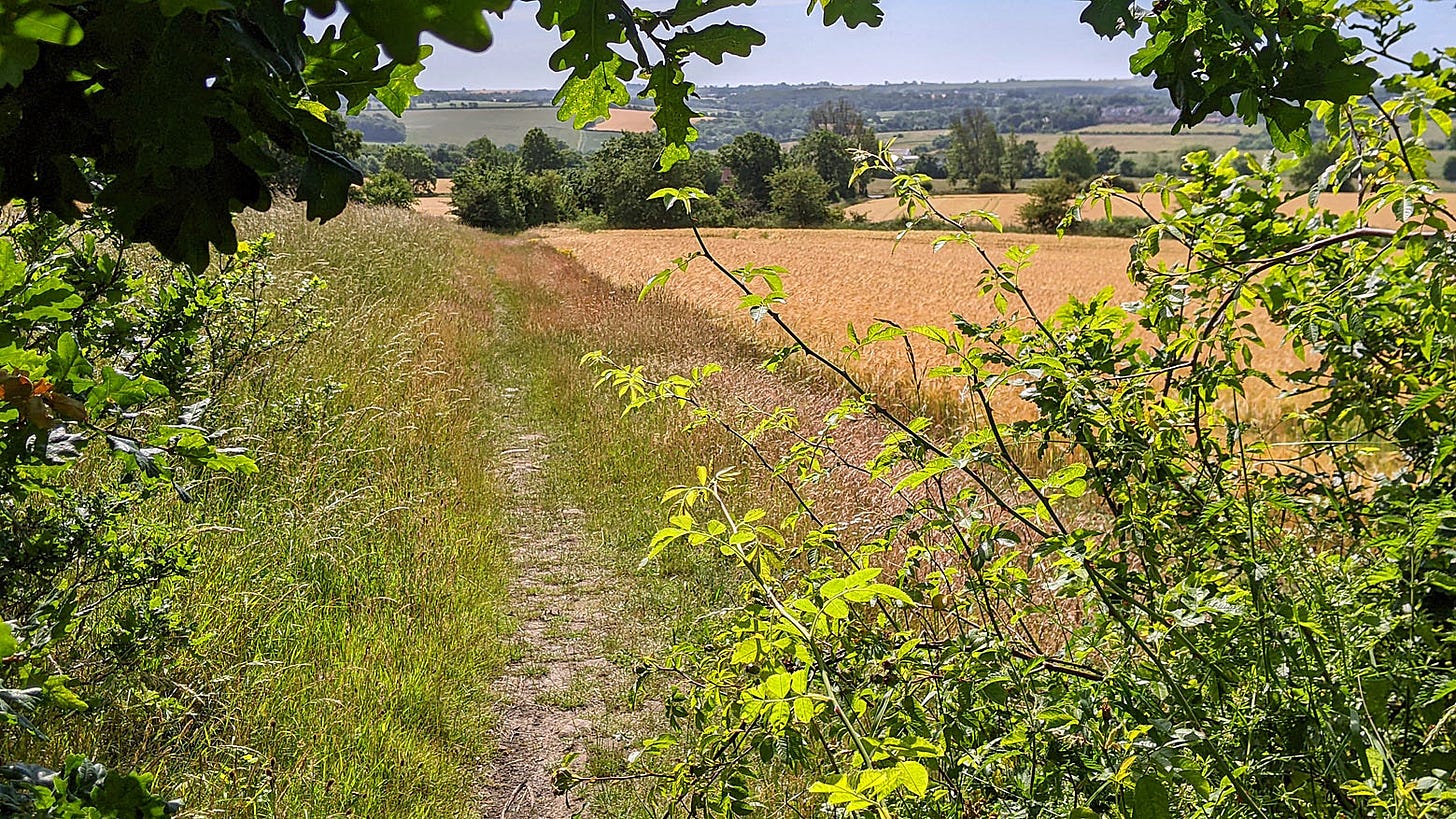



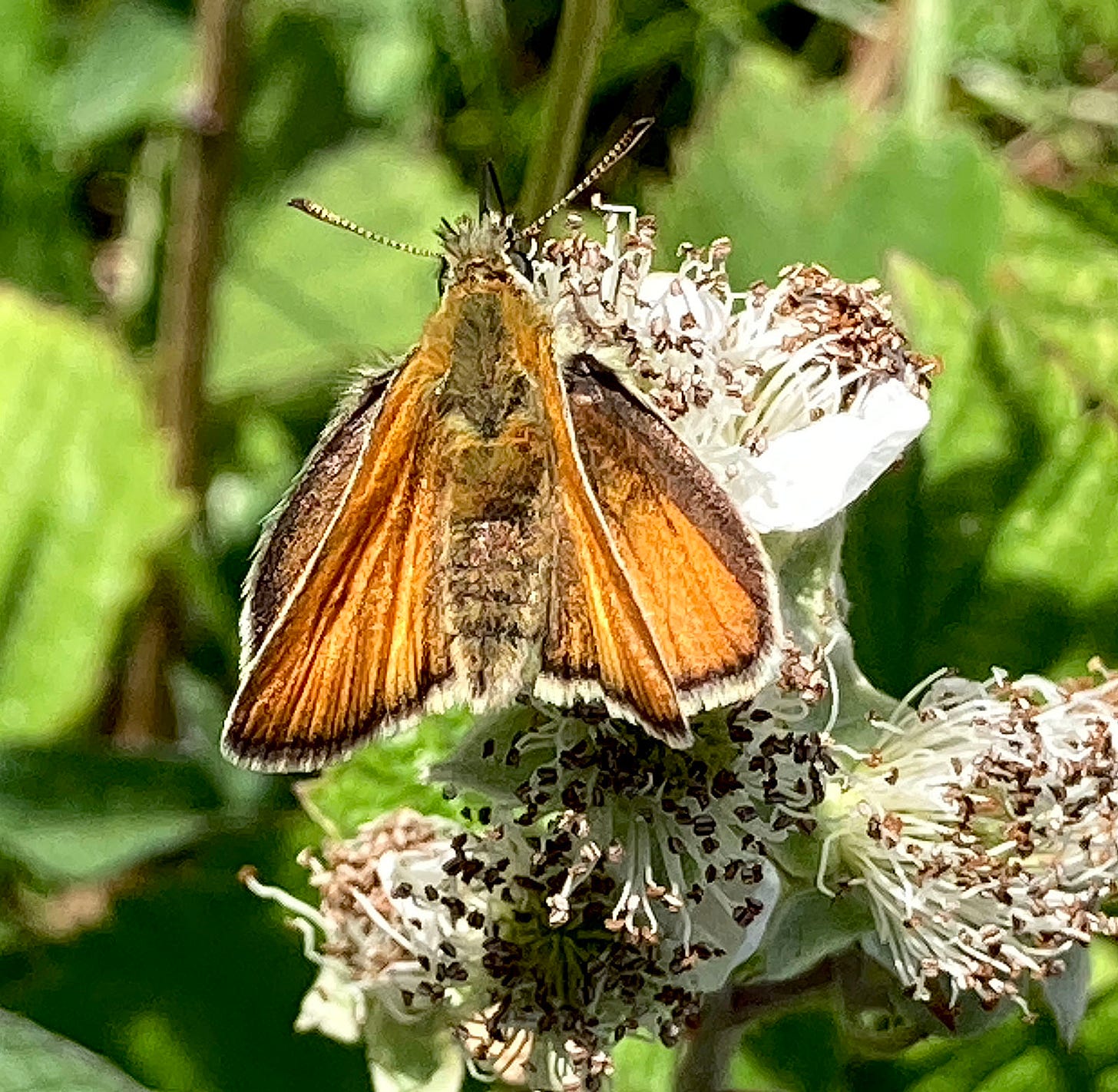

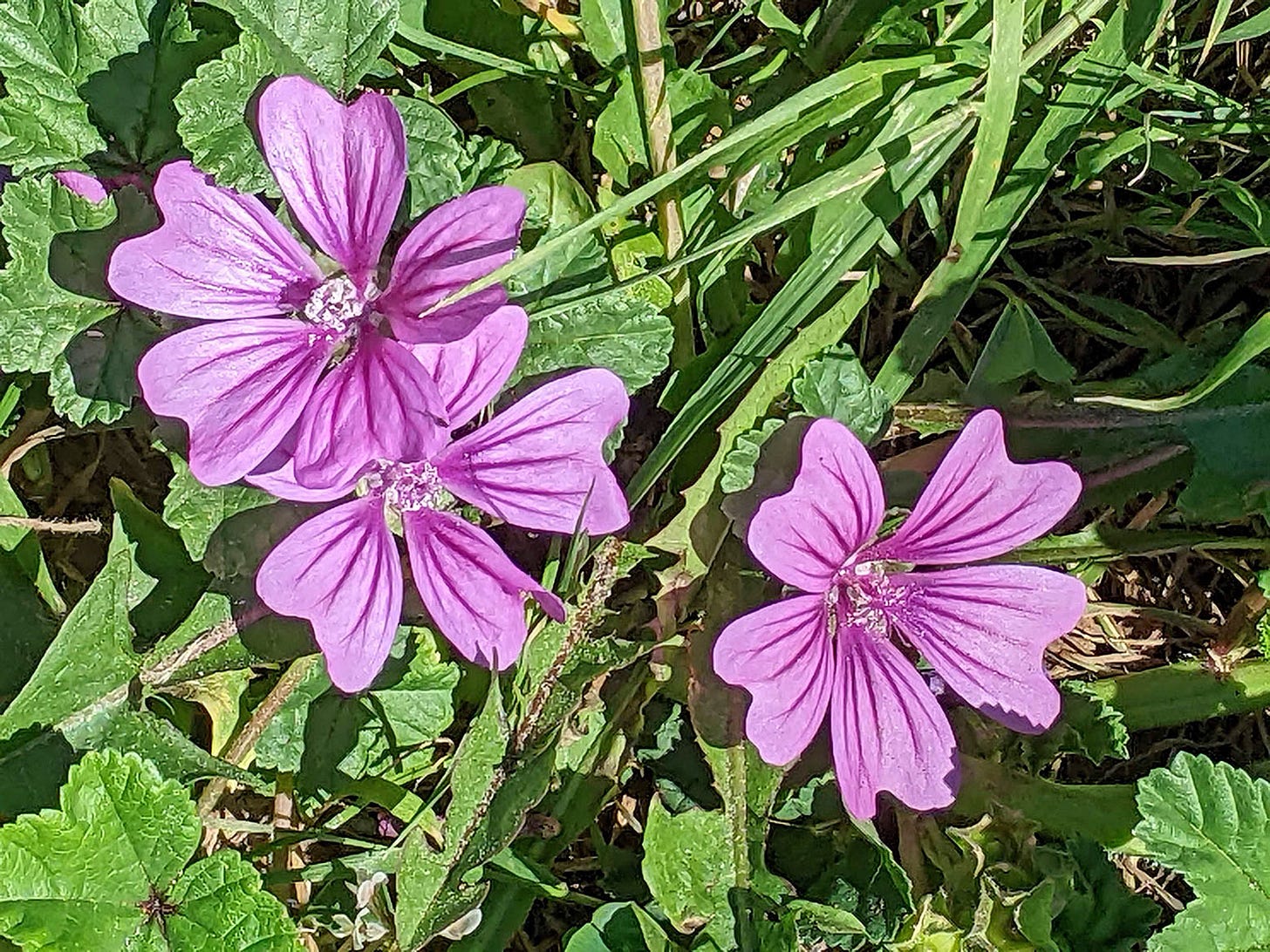
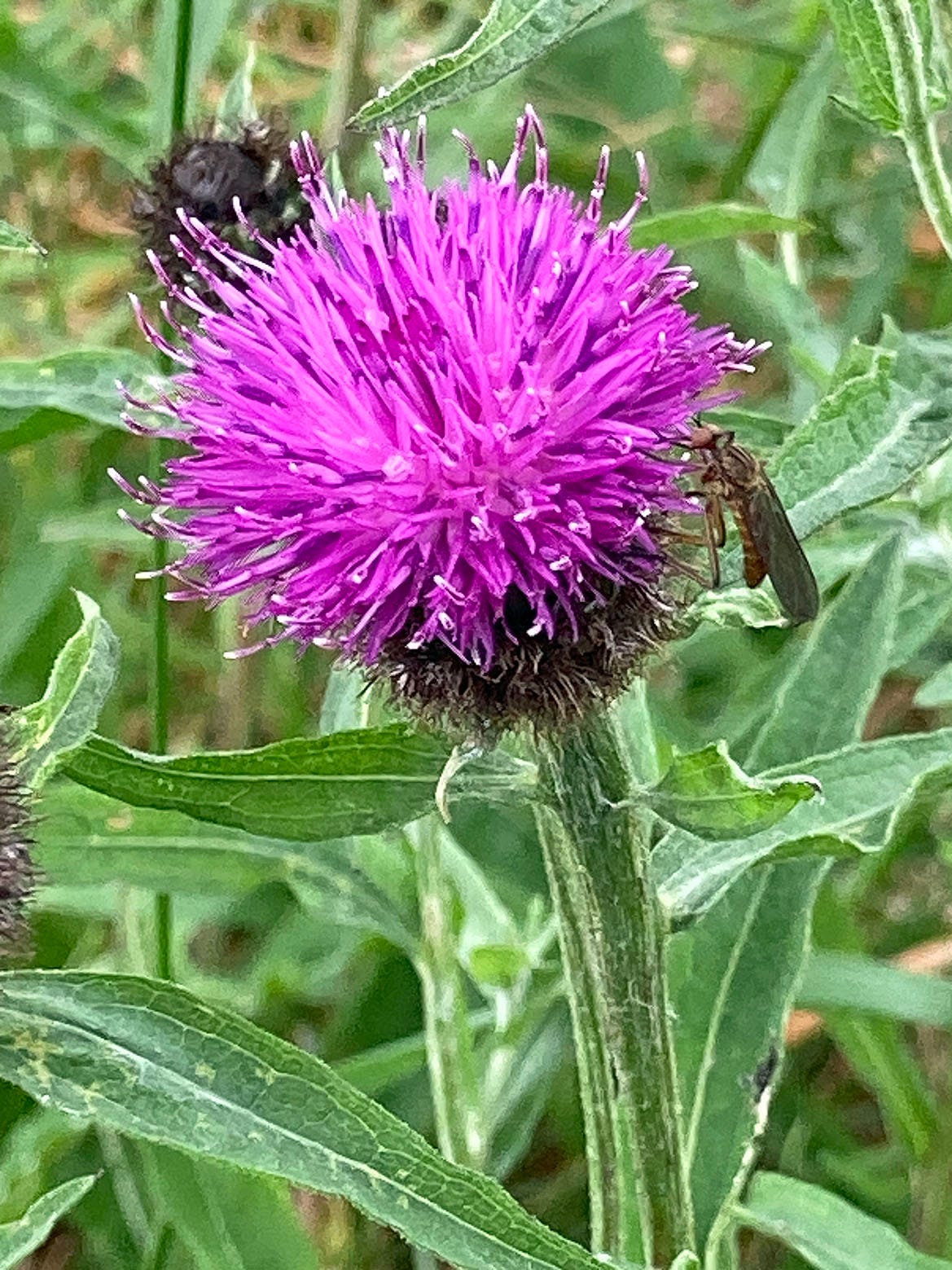
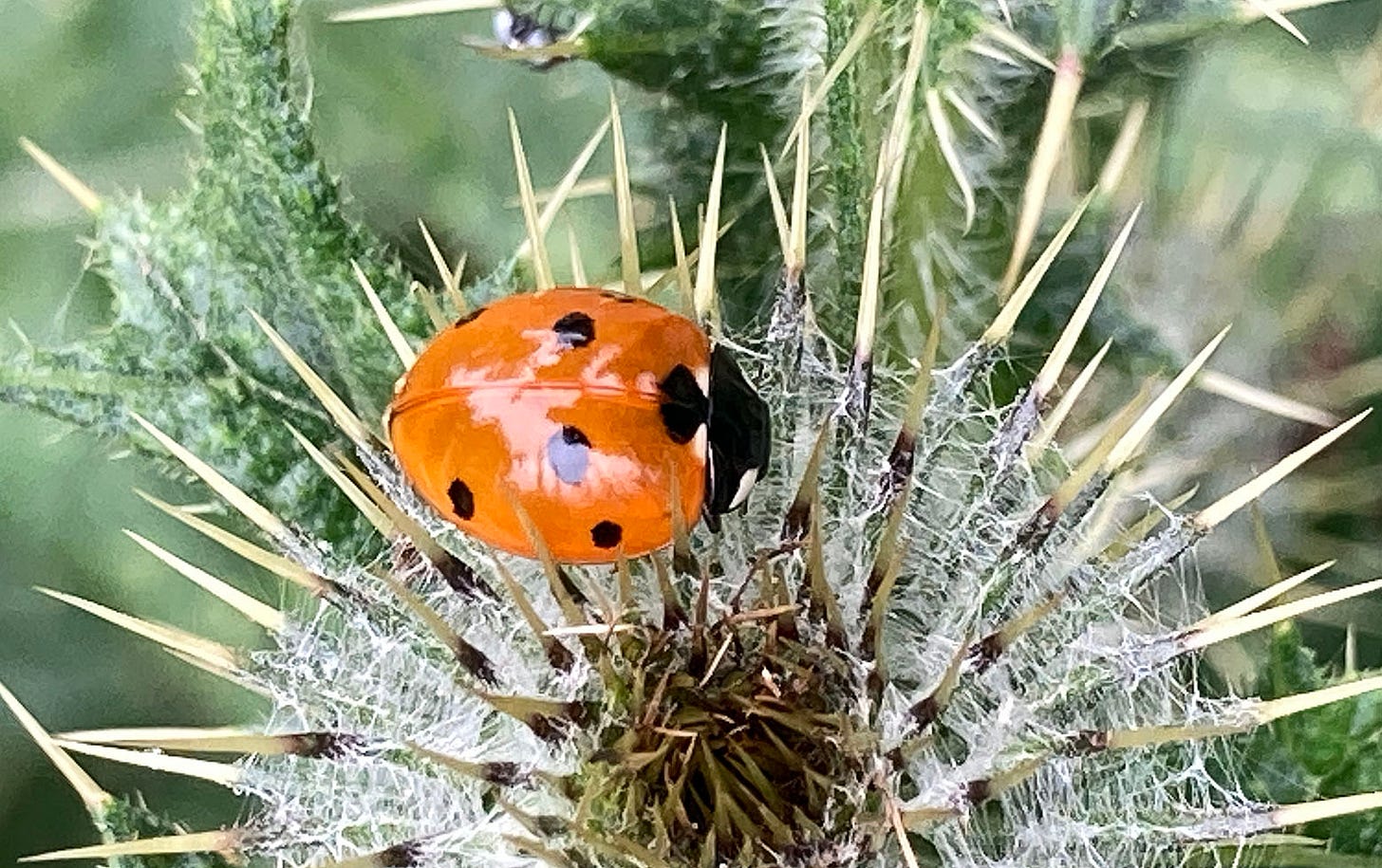

There is one particular walk, an old track which is also used by the farmer and his machinery, adjacent to what used to be on old colliery, now long closed and now a diverse habitat that has an abundance of Pineapple weed and walking along it first thing of a morning is so pleasant. The hedges on both sides are old and have and abundance of wildlife; it is only about 100m from end to end, but can take me an hour to walk along. When I look up and glance over the southern hedge, gorgeous views of the Erewash Valley from what is one of the highest points in Nottinghamshire. A lovely, engaging piece, Phil, thank you.
Another lovely vicarious walk with you Phil. Thank you.
I love the work of Charles Tunnicliffe. I suppose my first introduction to him was via the Ladybird books: What to look for in Spring, Summer, Autumn and Winter, which I grew up with and were my first introduction to identifying flora and fauna, along with knowledgeable parents and long country walks. There is a lovely museum/ gallery on Anglesey devoted to his work and a few years ago there was an exhibition at the Garden Museum in London. There’s a wonderful social media account called @lbflyawayhome which features his work quite often. Are you familiar with it?
Quite coincidentally I am going out for a walk tomorrow with a group of children from our local village primary school in search of curlews. I have been asked along to identify wild flowers for them, so will take my trusty Keble Martin, Majorie Blamey and Roger Phillips, along with other books to show them that there are other ways to look things up rather than google Lens! I might even get them to make a simple dichotomous key which has been a fun thing to do in the past.